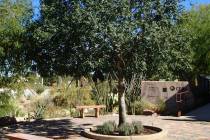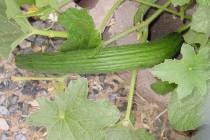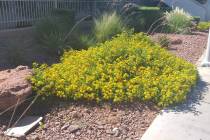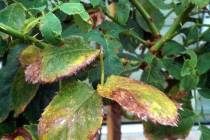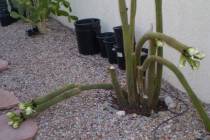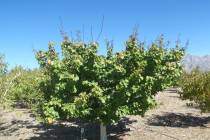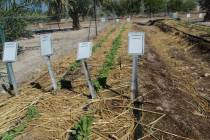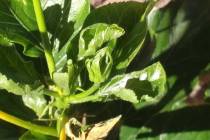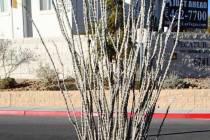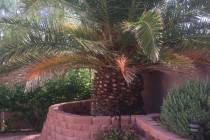Planting can occur almost 12 months of the year in our climate, but there are times to plant that are better than other times. For the best times, begin planting most trees, shrubs and fruit around the end of September.
Local Columns
Roses do not need daily watering, even during the hottest days. If the soil was prepared correctly at planting time and the soil surface covered in wood chips, they should get watered — at the most during the hottest times — every other day.
Beans, carrots and beets should have been harvest before the weather got hot. These are cool-season crops.
Plant several types of tomatoes rather than focus on one variety. Cherry, grape and pear tomatoes are the easiest to grow and set fruit the easiest.
It common for the chitalpa tree to partially defoliate in the summer.
Renewal pruning, cutting deep inside the shrub and removing larger wood, results in a flush of sucker growth from the remaining stubs that will be succulent and produce lots of leaves and flowers.
Plums and pluots improve in flavor when they are kept on the tree longer and harvested closer to their mature date. These fruits are normally harvested from the end of July to the first or second week of August in our climate.
The Chinese pistache is a good choice in the desert as a general landscape, street or lawn tree. It grows to about 30 feet in height.
Sucker removal and how often it’s done depends on the plant, how old it is and how the suckers are removed. Trees sucker more if they don’t get enough water.
Lantanas are easy to grow and can add a variety of colors that attract wildlife including butterflies to home landscapes.
Some plants don’t grow well in rock, and roses are one of them. Nearly all landscape plants in the rose family like soil improvement and a moist environment when planted in desert soils.
Be careful when putting cactuses on an automatic water or irrigation timer. They are watered so infrequently that it sometimes makes sense to water these plants manually with a hose rather than automating the task.
The active ingredient in Roundup and KnockOut is glyphosate. This active ingredient alone doesn’t produce any results for four to seven days after it is sprayed.
Some plants grow suckers at the base of the plant and others produce suckers, or new growth, a distance away from the plant. So far, the only practical way to eliminate them is to slice the roots and remove these plants, roots and all.
Q: I have just about reached my maximum frustration level with my 35 Italian cypresses. Between spraying them down weekly in the summer to keep the mites off and them not standing on their own without staking and guy wires for 2½ years, I am ready to give up. I am thinking about replacing them with 5-gallon dwarf golden arborvitae because they are smaller and easier to spray.
Cactuses, particularly agaves, are rotting and dying from damage by the agave weevil, which that lays its eggs at the base of agave leaves. As their young hatch from the eggs, they burrow into the stem of the agave and all through it, including the roots.
One easy way to tell the difference between a bay laurel and a Carolina cherry laurel is to crush the leaves and smell the herbal aroma. Bay laurel leaves have a pungent aroma. When you crush the leaves of Carolina cherry laurel, they have an aroma of maraschino cherries rather than herbal.










